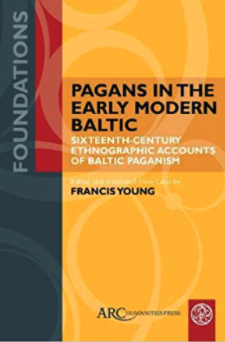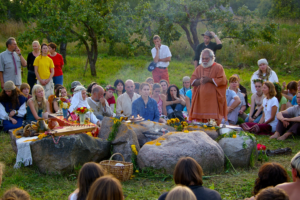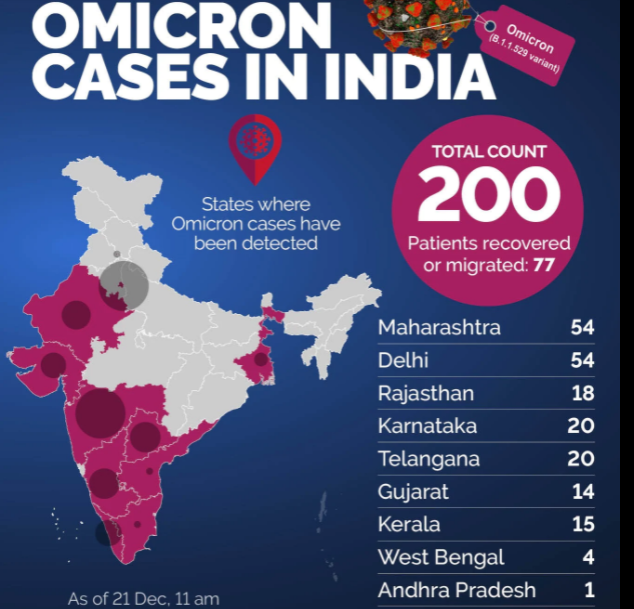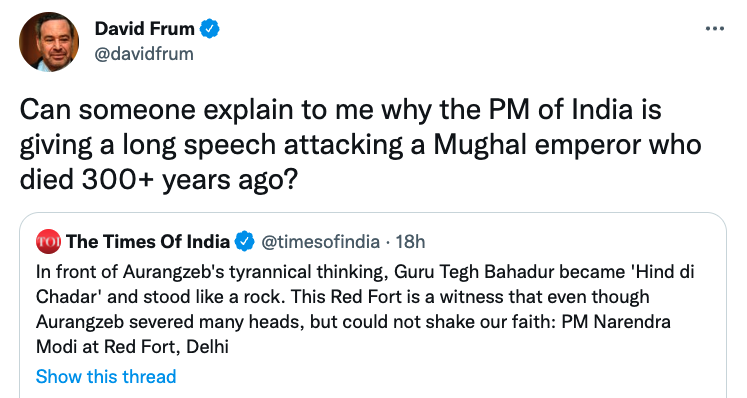Category: Open Thread
Open Thread – 4/1/2022 – Brown Pundits
 In the last week of this month I will be posting a podcast I did with Francis Young, author of Pagans in the Early Modern Baltic: Sixteenth-Century Ethnographic Accounts of Baltic Paganism (at my Substack). Over the hour and a half we talked about many topics, but one thing that struck me listening to him describe the details of the beliefs and practices of Lithuanian pagans, practices that persisted as living traditions centuries after the official Christian conversion of the state in ~1400 AD (Young estimates that in the 1500’s 30-40% of the population were what was then termed “Old Lithuanians,” baptized into Christianity but rural people who were almost totally uncatechized and continued to practice their ancestral religion), is how redolent they are of the Vedic religion. Young has convinced me that it is likely that the original Baltic branch of Indo-Europeans flourished somewhat to the south of their current distribution, which may be an outlier relic. If that is correct, they were likely positioned just to the west of the Indo-Iranian ur-heimat of the Fatyanovo-Balonov culture. Linguistically many scholars argue that Indo-Iranian and Balto-Slavic are a natural ‘clade’ within Indo-European languages.
In the last week of this month I will be posting a podcast I did with Francis Young, author of Pagans in the Early Modern Baltic: Sixteenth-Century Ethnographic Accounts of Baltic Paganism (at my Substack). Over the hour and a half we talked about many topics, but one thing that struck me listening to him describe the details of the beliefs and practices of Lithuanian pagans, practices that persisted as living traditions centuries after the official Christian conversion of the state in ~1400 AD (Young estimates that in the 1500’s 30-40% of the population were what was then termed “Old Lithuanians,” baptized into Christianity but rural people who were almost totally uncatechized and continued to practice their ancestral religion), is how redolent they are of the Vedic religion. Young has convinced me that it is likely that the original Baltic branch of Indo-Europeans flourished somewhat to the south of their current distribution, which may be an outlier relic. If that is correct, they were likely positioned just to the west of the Indo-Iranian ur-heimat of the Fatyanovo-Balonov culture. Linguistically many scholars argue that Indo-Iranian and Balto-Slavic are a natural ‘clade’ within Indo-European languages.
The Wikipedia entry on Lithuanian neo-paganism (Romuva) has a section titled “Relation with Hinduism”:
…But for Lithuania’s Romuva community, which traces its traditions back to ancient folklore, it is evidence of a connection to India, Hinduism and Sanskrit that has become a part of their Romuva identity, along with its pantheon of gods and fairly standard pagan rituals. Some believe that the connection between Hinduism and Romuva made Romuva to be more than a “primitive, shamanic religious tradition”…
…
Similarly Ašvieniai are divine twins in the Lithuanian mythology, counterparts of Vedic Ashvins. The Ašvieniai are represented as pulling a carriage of Saulė (the Sun) through the sky. Ašvieniai, depicted as žirgeliai or little horses, are common motifs on Lithuanian rooftops…
Romuva and Hindu groups have come together on numerous occasions to share prayers and participate in dialogue. These events have taken place in Lithuania, Atlantic City, New Jersey, Boston, Massachusetts, Epping, New Hampshire, and elsewhere.

I had assumed that Lithuanian Catholicism derived its strength from the Counter-Reformation period (the last sacred snake groves were destroyed by priests in the 18th-century), but Young explained that the reality is that Catholicism and the Lithuanian national identity became associated only with the absorption of Lithuania into the Russian Empire, where the dominant religion was Eastern Orthodoxy. It was in the context of religious and ethnic marginalization in the 19th century that the two elements of modern Lithuanian identity finally began to become synergistic, and therefore heterodox peasants began to finally adhere more strictly to a Catholic identity.
Open Thread – Brown Pundits – 3/18/2022

A comment on the earlier open thread:
Interested to know what Razib and Omar sahab think of Holi, any experiences Razib?
I don’t have any experience and did not know it was Holi. Thanks for telling me!
I was going to visit India for business in 2020, but then COVID-19 happened, so I have never been to India. I have only been to Bangladesh twice in the last 40 years, so it did not overlap with Holi.
Open Thread – Brown Pundits – 2/26/2022

Open Thread – 01/20/2022 – Brown Pundits
What’s going on?
Open Thread – 01/07/2022 – Brown Pundits
Open Thread – Renewal of Covid Restrictions in India

Let the chats begin. Feel free to discuss other things here. As Razib hasn’t added an Open Thread I thought I should
What’s the latest on Omicron ? My amateurish take below.
Yet in India we continue to display the numbers of Omicron morbidly (even for asymptomatic). Absurd lockdowns and restrictions like Night curfews and interstate RT PCR testing are commonplace in the country. What lies ahead for the people whose work is dependent on the whims of the governments (especially state) makes me very cynical.
It seems Indians by and large think they’re “Ruled’ by governments. In Western societies citizens know they’re “Governed”. I guess that explains why in India we have had no protests against the string of senseless restrictions and lockdowns last 18 months.
Open Thread – 12/3/2021 – Brown Pundits
Lots of Indian tech CEOs. This is just the world in 2021.
Open Thread – 11/19/2021 – Brown Pundits
Modi?
Open Thread – 10/29/2021 – Brown Pundits
Please make sure to subscribe to the podcast. We’re still posting things and sometimes there isn’t a blog post associated with it.
